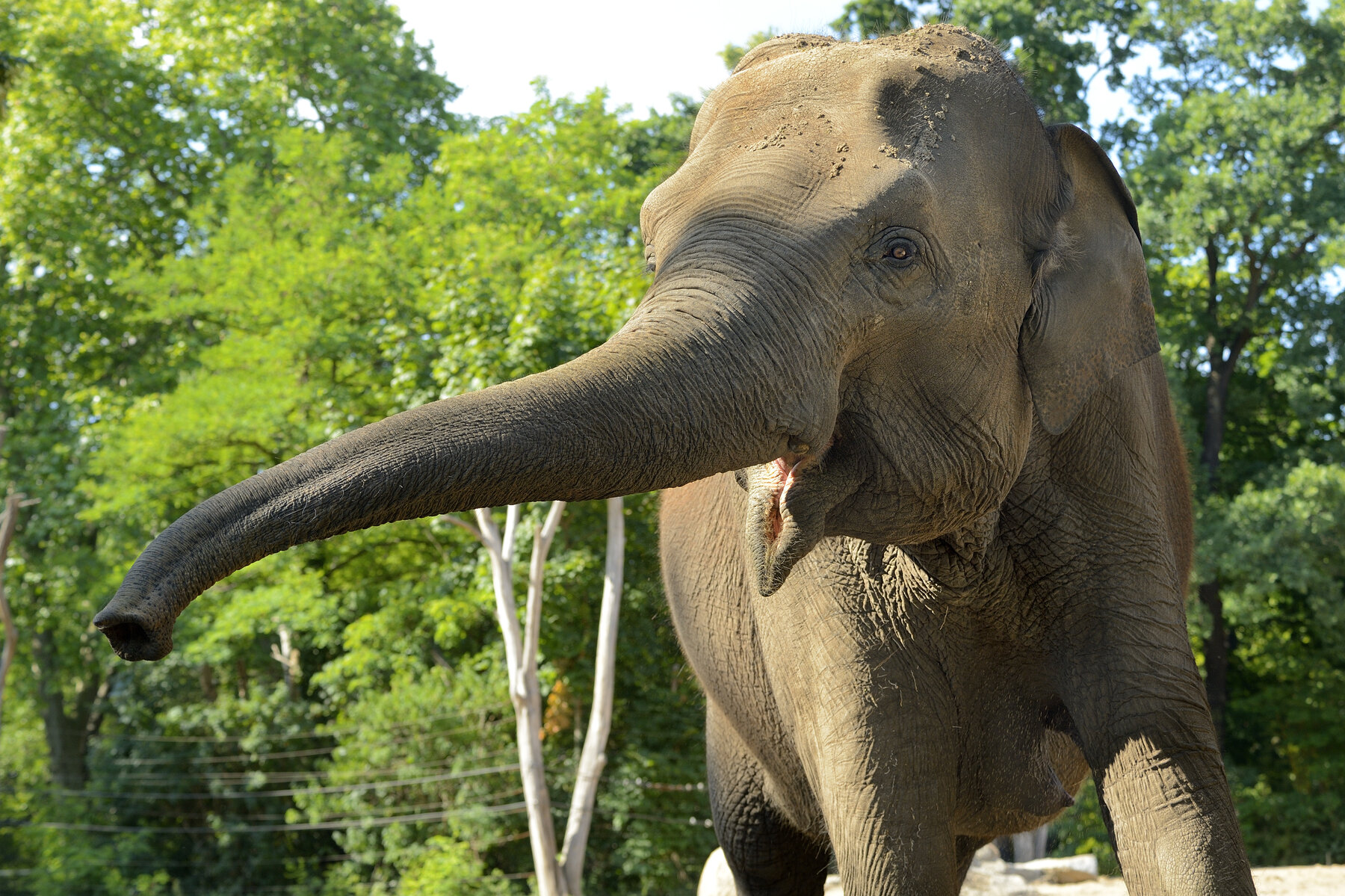
Asian Elephant
Elephas maximus
The Asian elephant weighs approx. five tonnes and is three metres high, making it the largest land mammal in Asia and thus somewhat smaller than its larger African relative.
Charakteristics
- Origin
South and Southeastern Asia
- Habitat
Tropical rainforests, deciduous forests, savannahs, bushland
- Diet
Grass, hay, fruits, twigs, bark, roots
- Status
approx. 50,000
- Size
on average 2.70 m (max. 3.40 m)
- Weight
Bull approx. 5 t, cow approx. 2.7 t
- Gestation period
approx. 22 months
- Achievable age
60 to 70 years in human care, approx. 60 years in the wild
Threat Categories of IUCN


Typical elephant: loyal and considerate
As social herd animals, elephants live together in large family units consisting of mothers, aunts and daughters, with the most experienced cow being the leader of the group. Bulls join the herd only during the mating season and otherwise move on alone afterwards. Even male offspring leave the herd when they reach 8–10 years – only the cows remain together for a lifetime.
A trunk – many abilities
As opposed to us humans, the nose and upper lip are fused together into one long formation. Using their trunks, they can take in food, breathe, smell, communicate, grasp or suck up water and then blow it into their mouths. If danger threatens, then the otherwise good-natured animals can also make use of their trunks to defend themselves and to inflict deadly blows to enemies. A truly miraculous tool.
Did you know that...
...elephants spend 19 hours per day eating,
...they have the longest gestation period of all land mammals at 22 months
...and a fully grown bull weighs up to 5 tons? Cows weigh about half that and newborns weigh over 100 kg.
